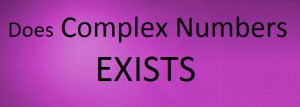Subscribe Us for regular updates. … [Read more...]
References
For going through History Of Mathematics, I have gone through various videos, documents and websites as below http://www-history.mcs.st-and.ac.uk http://ancienthistory.about.com/ http://it.stlawu.edu/~dmelvill/mesomath/obsummary.html http://www.enotes.com/topic/ http://en.wikipedia.org/wiki/Approximations_of_%CF%80 http://www.storyofmathematics.com/ http://www.archimedes-lab.org/numeral.html http://en.wikipedia.org/wiki/Prehistoric_numerals http://it.stlawu.edu/~dmelvill/mesomath/erbiblio.html#MCT http://recursostic.educacion.es/descartes/web/materiales_didacticos/A_history_of_Mathematics/Mesopotamia.htm http://www.math.ubc.ca/~cass/courses/m446-03/pl322/pl322.html … [Read more...]
How to ADD and SUBTRACT Recurring Numbers
Adding and Subtracting Recurring Numbers To know to how to add and subtract recurring numbers we need to know below basics. Decimals and the conventions of writing decimals. Converting Decimals to Fractions. What are Recurring Numbers? How to convert Recurring Numbers to Fractions? 1) Decimal Numbers: Decimals Numbers are numbers which are not natural numbers and which always has denominator other than 1. It’s denoted by a POINT between numbers. Eg: 1.2, 783.45 Here, Numbers before decimal (1 & 73) are called Integral Parts. 1.2 has ONE decimal place while 783.45 have TWO decimal places. 2 and 45 are called as Decimal Values 2) Converting Decimals to Fractions and writing in terms of powers of 10: 1.2 = 12⁄10 = 12 x 10-1 (1 Decimal Place so we moved decimal point 1 place forward and hence needs to multiply by reverse of that many powers of 10 i.e. 10-1). 783.45 = 78345⁄100 = 78345 x 10-2 (2 Decimal Places so we moved decimal point 2 places forward and hence needs to multiply by reverse of that many powers of 10 i.e. 10-2). 0.000123 = 123⁄1000000= 123 x 10-6 (6 Decimal Places so we moved decimal point 6 places forward and hence needs to multiply by reverse of that many powers of 10 i.e. 10-6). Standard Form of writing Decimal Number: When we have very big number or very small number then we follow a standard form for writing decimal numbers. Standard form is to have ONLY ONE digit in Integral Part. 0.000123 = 1.23 x 10-4 (In order to get 1.23 we need to move decimal point 4 places forward. Hence multiply by reverse of that many powers of 10 i.e. 10-4). 987654 = 9.87654 x 105 (In order to get 9.87654 we need to move decimal point 5 places backward. Hence multiply by that many powers of 10 i.e. 105). 3) Recurring Numbers: Recurring numbers are decimal number in which decimal values are continuously repeated. Eg: 1.33333…., 12.45454545…., … [Read more...]
Vedic Mathematics Shortcuts and Tricks
Latest Vedic Mathematics Shortcuts and Tricks tutorial. Click Here for the Vedic Mathematics Tips and Tricks pdf file. … [Read more...]
Complex Numbers / Imaginary number i —- do they exists??
Does Complex Numbers / Imaginary number i exists?? People studying Higher Mathematics are often confused with the existence of Complex Numbers and its Imaginary number "i". What are Complex Numbers: Complex Numbers are numbers whose 1st part is Real while 2nd part is Imaginary and is expressed as a+bi where a --> Real Part bi --> Imaginary Part and i --> √ -1 wait √ -1 .... Is it POSSIBLE ?? Reason of Confusion: In schools and colleges everyone has learnt that we cannot have square root of Negative numbers i.e. √ negative number doesnot exists. Then how it is possible to have √ -1 . Moreover "i" is called as Imaginary Number hence i is often considered as it does not exists and was used just for theory but if it is really imaginary then how it is used in Real Life Mathematics? How "i" and Complex Numbers can be used in Real Life Exmaples? Quite Correct !!! But then my question is does our day-to-day used numbers like 0-9, π, 1/3, √ 2 , etc. exists? All the numbers are Human Creation for making life of us Simpler and all the numbers took 100's & 1000's of years for approval and to be consistently used. Brief History of Numbers: Initially Romans used numbers only from 1-9 i.e. without any '0'. Zero: But then Indians introduced '0' and when this new number went to Europe it was not accepted for 100's of years. Reason was simple Europeans were very comfortable with 1-9 for their transactions but as years progressed they realized the importance of '0' which makes solving certain equations in simple manner and started accepting it. Fractions: Today fractions are widely used across all fields. But can fractions exists for all items?? NO... we cannot have 11⁄2 men ... right ?? but we can definitely have 21⁄3 apples. Also to solve equations like 2x = 1, fractions were required and hence for convenience fractions gradually became part of our number system. Negative Numbers: Like fractions even negative … [Read more...]


